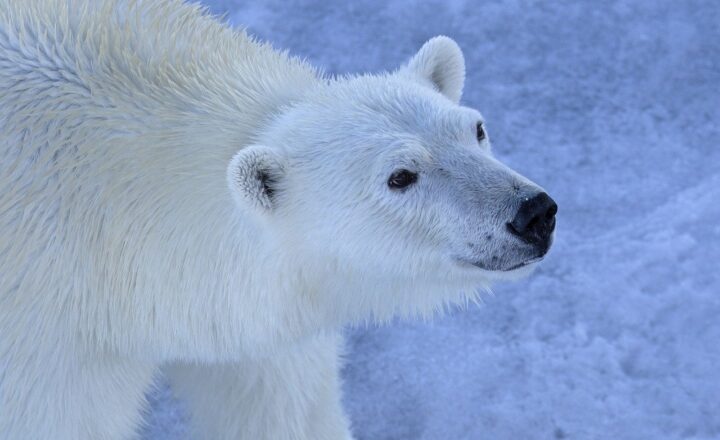The End of the Ice Age: How Earth’s Warming Led to the Rise of Modern Ecosystems
November 14, 2024

The end of the last Ice Age, roughly 11,700 years ago, marked a pivotal moment in Earth’s history—a transformation that not only altered the climate but also set the stage for the flourishing of modern ecosystems as we know them today. This period of warming, often termed the Holocene epoch, has profound implications for biodiversity, human development, and environmental dynamics.
The Last Glacial Maximum: A World Covered in Ice
During the Last Glacial Maximum, around 26,000 years ago, large parts of the Northern Hemisphere were blanketed under massive ice sheets, with ice extending into what is now the United States, Europe, and Asia. This frigid climate constrained habitats, limiting the diversity and abundance of life forms, particularly in the polar regions.
- Flora and Fauna Under ICE: Most plant life was restricted to warmer areas, while large mammals like mammoths and woolly rhinoceroses roamed the icy plains.
- Migration and Adaptation: To survive, many species adapted to the harsh conditions, but other organisms found niches in the limited non-ice regions, leading to varied evolutionary paths.
The world was stark and uninviting—a far cry from the lush, diverse ecosystems that would emerge once the ice began to retreat.
The Warm-Up: Causes of Climate Change
As the last Ice Age waned, a series of natural phenomena catalyzed the warming of the Earth, including:
- Milankovitch Cycles: Variations in Earth’s orbit and axial tilt affected solar insolation, leading to significant climate shifts over thousands of years.
- Greenhouse Gas Concentrations: The increase in greenhouse gases due to natural processes, including volcanic activity, contributed to the rise in global temperatures.
- Ocean Currents: Changes in ocean currents also played a role in redistributing heat across the planet, influencing regional climates significantly.
As these changes unfolded, the world began to warm rapidly, with glacial ice melting and sea levels rising, paving the way for a dramatic ecological transformation.
The Impact of Warming: Ecosystem Development
The increase in temperatures led to significant environmental changes that fostered the development of modern ecosystems. Here’s a look at some key aspects:
1. Diverse Flora Flourished
With the retreat of ice, a variety of habitats emerged, which enabled diverse plant life to thrive. Forests, grasslands, and wetlands began to spread across previously glaciated areas:
- Forest Expansion: As temperatures rose, vast forests of deciduous and coniferous species replaced tundra and shrublands, creating habitats for countless species of animals.
- Grassland Ecosystems: The formation of savannas and grasslands offered new ecological niches, supporting herbivores and subsequently predators, leading to increasing biodiversity.
2. New Animal Species Emerged
The warming climate facilitated the migration and evolution of various fauna:
- Megafauna Evolution: Species such as the giant ground sloth and saber-toothed cat adapted to new environments, reflecting changes in climate and vegetation.
- Human Migration: Early humans, taking advantage of the melting ice, expanded across continents, leading to population growth and the establishment of diverse cultures and communities.
The ecological reconfiguration set the foundation for complex food webs and interdependent relationships among species.
The Role of Humans in This Transition
With the rise of warmer ecosystems came the advent of human societies. As humans dispersed across the globe, their interactions with these new ecosystems had lasting impacts:
- Agricultural Development: The Holocene allowed for the establishment of agriculture, fundamentally changing human societies and their relationship with nature.
- Domestication of Animals: Humans began domesticating animals, leading to major changes in local ecosystems.
- Environmental Management: Continued interaction led to the first steps toward environmental manipulation and management practices that affect us to this day.
The relationship between humans and ecosystems evolved, allowing for both mutual benefit and potential detriment.
Conclusion: The Legacy of Warming and Ecosystem Richness
The end of the Ice Age represents not just a climatic shift but a fundamental turning point in the narrative of life on Earth. The warming planet set the stage for the evolution and diversification of ecosystems that underpin our world today. As we face modern challenges related to climate change, understanding this history enables us to grasp the intricate relationships between climate, ecology, and humanity.
The lessons of the past are vital for respecting our environment and ensuring the sustainability of Earth’s rich tapestry of life as we move forward into an uncertain future.
Throughout Earth’s history, the interplay between climatic conditions and biological evolution continues to shape the world we inhabit. By studying such pivotal moments as the end of the Ice Age, we gain not only insight into our natural world but also pathways into building a more sustainable future.







